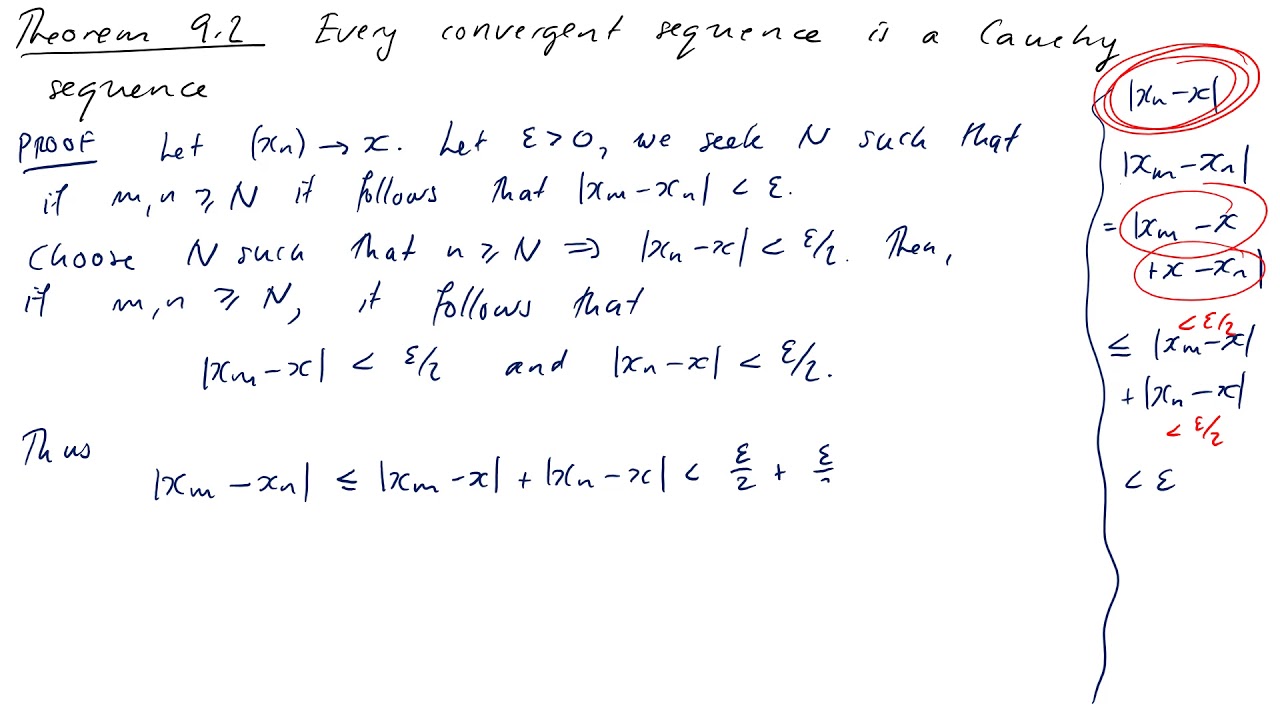
What is a Cauchy sequence? In simple terms, a Cauchy sequence is a sequence of numbers where the numbers get closer and closer together as the sequence progresses. Imagine lining up dominoes so that each one is just a tiny bit closer to the next than the last one. Eventually, they are so close that you can barely see any space between them. This concept is crucial in mathematics, especially in understanding limits and convergence. Named after the French mathematician Augustin-Louis Cauchy, these sequences help mathematicians determine whether a sequence will settle down to a single value or not.
What is a Cauchy Sequence?
A Cauchy sequence is a sequence where the elements get closer to each other as the sequence progresses. Named after the French mathematician Augustin-Louis Cauchy, these sequences play a crucial role in mathematical analysis and understanding convergence.
- A Cauchy sequence is a sequence of numbers where the difference between any two terms becomes arbitrarily small as the sequence progresses.
- The concept was introduced by Augustin-Louis Cauchy in the 19th century.
- Cauchy sequences are essential in the study of real numbers and metric spaces.
- They help in defining the completeness of a space, which means every Cauchy sequence in that space converges to a limit within the space.
- In simpler terms, if you pick any two terms far enough along in the sequence, they will be very close to each other.
Properties of Cauchy Sequences
Understanding the properties of Cauchy sequences can help grasp their significance in mathematics. These properties are foundational in many areas of analysis.
- A Cauchy sequence does not necessarily converge, but in a complete space, it always does.
- Every convergent sequence is a Cauchy sequence, but not every Cauchy sequence is convergent.
- In the space of real numbers, every Cauchy sequence converges to a real number.
- The concept of Cauchy sequences can be extended to complex numbers and other metric spaces.
- If a sequence is bounded and monotonic, it is also a Cauchy sequence.
Examples of Cauchy Sequences
Examples can make abstract concepts more tangible. Here are some common examples of Cauchy sequences.
- The sequence 1/n, where n is a positive integer, is a Cauchy sequence.
- The decimal expansion of irrational numbers like π and e forms a Cauchy sequence.
- The sequence defined by the terms of a geometric series with a ratio less than 1 is a Cauchy sequence.
- The sequence of partial sums of a convergent series is a Cauchy sequence.
- The sequence of rational approximations to an irrational number is a Cauchy sequence.
Applications of Cauchy Sequences
Cauchy sequences are not just theoretical constructs; they have practical applications in various fields of mathematics and science.
- They are used in numerical analysis to approximate solutions to equations.
- In computer science, Cauchy sequences help in algorithms for numerical computations.
- They are crucial in the study of functional analysis and operator theory.
- Cauchy sequences are used in the construction of real numbers from rational numbers.
- They play a role in the theory of integration and differentiation.
Cauchy Sequences in Different Spaces
Cauchy sequences can be generalized to different mathematical spaces, each with its own unique properties.
- In metric spaces, a sequence is Cauchy if the distance between terms becomes arbitrarily small.
- In normed vector spaces, a sequence is Cauchy if the norm of the difference between terms goes to zero.
- In topological vector spaces, Cauchy sequences are defined using the topology of the space.
- In Banach spaces, every Cauchy sequence converges to a limit within the space.
- In Hilbert spaces, Cauchy sequences are used to study orthogonal projections and inner products.
Historical Context of Cauchy Sequences
The development of Cauchy sequences marked a significant advancement in mathematical analysis.
- Augustin-Louis Cauchy introduced the concept in his 1821 book "Cours d'Analyse."
- The idea was revolutionary because it provided a rigorous foundation for calculus.
- Cauchy's work laid the groundwork for the formal definition of limits and continuity.
- The concept was further developed by mathematicians like Karl Weierstrass and Richard Dedekind.
- Cauchy sequences helped resolve paradoxes and inconsistencies in earlier mathematical theories.
Fun Facts about Cauchy Sequences
Here are some interesting tidbits that might surprise you about Cauchy sequences.
- The term "Cauchy sequence" is sometimes used interchangeably with "fundamental sequence."
- In non-standard analysis, Cauchy sequences are used to define hyperreal numbers.
- The concept of Cauchy sequences can be extended to more abstract structures like groups and rings.
The Final Word on Cauchy Sequences
Cauchy sequences are a cornerstone in understanding mathematical analysis. They help us grasp the concept of convergence without needing to know the limit. Named after Augustin-Louis Cauchy, these sequences are crucial in fields like calculus and number theory. They ensure that within any given tolerance, the terms of the sequence get arbitrarily close to each other. This property is vital for proving the completeness of real numbers and understanding metric spaces. Whether you're diving into advanced math or just curious about the building blocks of analysis, knowing about Cauchy sequences gives you a solid foundation. They might seem abstract at first, but their applications are far-reaching. From ensuring the accuracy of numerical methods to forming the basis of more complex theories, Cauchy sequences are more than just a mathematical curiosity—they're a fundamental part of the mathematical landscape.
Was this page helpful?
Our commitment to delivering trustworthy and engaging content is at the heart of what we do. Each fact on our site is contributed by real users like you, bringing a wealth of diverse insights and information. To ensure the highest standards of accuracy and reliability, our dedicated editors meticulously review each submission. This process guarantees that the facts we share are not only fascinating but also credible. Trust in our commitment to quality and authenticity as you explore and learn with us.
